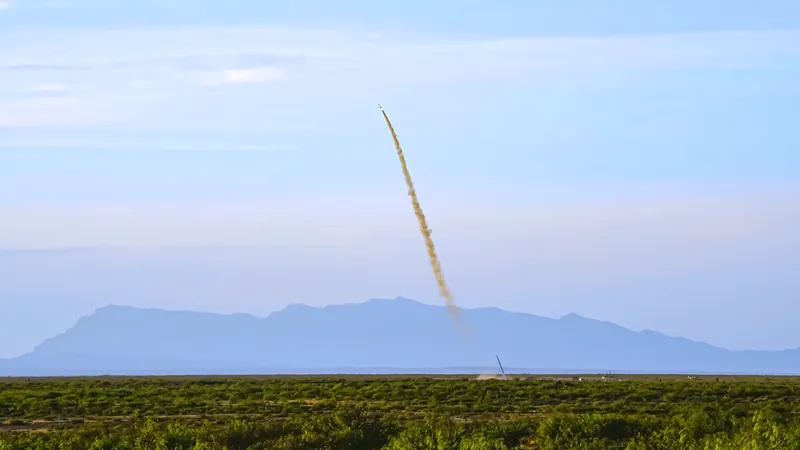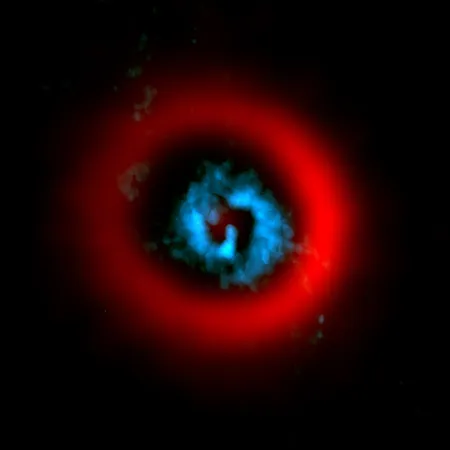
Revolutionizing Rocket Science: Space Shuttle Veteran Pam Melroy Joins Venus Aerospace After Groundbreaking Engine Milestone
2025-09-16
Author: Wei Ling
In a striking move set to redefine the aerospace industry, Pam Melroy, one of only two women to command a NASA space shuttle, has joined the Board of Directors at Venus Aerospace. This Houston-based startup has recently achieved a monumental feat by becoming the first U.S. firm to launch a rotating detonation rocket engine (RDRE), a technology long awaited in the aerospace sector.
Melroy, who previously served as NASA's Deputy Administrator, is leveraging her extensive experience across the U.S. Air Force, DARPA, and both the FAA and private sectors to steer this innovative company into a new era of propulsion technology. CEO Sassie Duggleby expressed the decision to bring Melroy on board was a no-brainer, citing her outstanding expertise that aligns perfectly with Venus’ goals.
A Breakthrough in Rocket Propulsion Technology
The RDRE, a concept that has lingered in theoretical realms for over fifty years, made headlines with its successful demonstration during a suborbital flight on May 14. This revolutionary engine operates not through a continuous flame but with rapid bursts of detonation, drastically increasing thrust and efficiency. According to Duggleby, the launch has generated immense interest, flipping perceptions from skepticism to enthusiastic validation.
"We had a customer who thought we were just a PowerPoint presentation until they saw our engine in action," Duggleby shared.
How Did They Achieve This Breakthrough?
Melroy first encountered RDREs while working at DARPA, describing them as a perennially elusive technology. Unlike traditional engines that burn fuel steadily, RDREs unleash explosive bursts of energy, offering an efficiency increase of about 15% compared to their conventional counterparts. This efficiency leap could exponentially raise payload capacities, transforming launch capabilities as we know them.
Venus Aerospace credit their breakthrough to three major innovations: rapid prototyping using 3D metal printing, advanced high-speed cameras capturing ignition at one million frames per second, and a closely guarded third factor that Duggleby plans to keep under wraps.
The Future of Space Travel: Two-Hour Flights?
Venus Aerospace dreams big, with aspirations for high-speed global travel. Imagine journeying from San Francisco to Tokyo in just two hours! Their futuristic Stargazer M4 jet, designed to hit Mach 4, showcases the potential of integrating the RDRE with the Venus Detonation Ramjet.
This strategic focus on propulsion places Venus in a unique category among aerospace startups, having already achieved a technical milestone unmatched by competitors. Duggleby boasts, "We flew the first-ever high-thrust RDRE," positioning Venus at the forefront of this exhilarating new chapter in spaceflight.
Broader Implications for Space Exploration
Melroy highlights the diverse applications for RDRE technology, envisaging not just passenger jets but also vehicles for deep space exploration, lunar landers, and even defense applications. She points to the NASA Artemis program as a potential arena where RDREs could excel, providing a solution that doesn’t require cryogenic fuels.
As global competition heats up, Melroy believes that innovations like Venus’ RDRE will play a crucial role in maintaining the United States’ leadership in the burgeoning commercial space industry. "This technology has the potential to supercharge space industry growth," she stated.
Why Venus Aerospace is Poised for Success
With an unprecedented wave of interest from potential customers, Duggleby emphasizes that Venus is rapidly scaling up. "The customer pull that we're experiencing is incredible," she said. And Melroy smartly adds, "Venus isn't going to be small for long."
With their sights firmly set on reshaping aerospace travel and exploration, the future looks exceedingly bright for Venus Aerospace and its groundbreaking RDRE technology.



 Brasil (PT)
Brasil (PT)
 Canada (EN)
Canada (EN)
 Chile (ES)
Chile (ES)
 Česko (CS)
Česko (CS)
 대한민국 (KO)
대한민국 (KO)
 España (ES)
España (ES)
 France (FR)
France (FR)
 Hong Kong (EN)
Hong Kong (EN)
 Italia (IT)
Italia (IT)
 日本 (JA)
日本 (JA)
 Magyarország (HU)
Magyarország (HU)
 Norge (NO)
Norge (NO)
 Polska (PL)
Polska (PL)
 Schweiz (DE)
Schweiz (DE)
 Singapore (EN)
Singapore (EN)
 Sverige (SV)
Sverige (SV)
 Suomi (FI)
Suomi (FI)
 Türkiye (TR)
Türkiye (TR)
 الإمارات العربية المتحدة (AR)
الإمارات العربية المتحدة (AR)